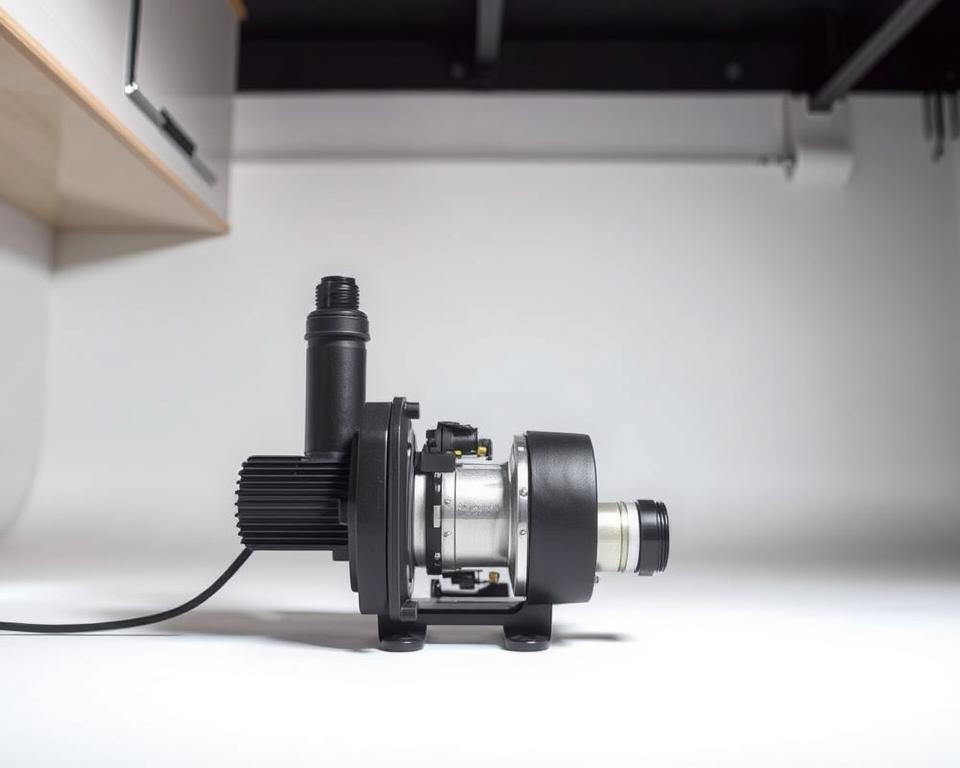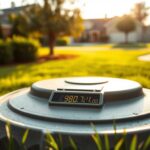A Guide to RV Black Water Tank Pumps & Maintenance Advice
Ever wondered about the impact of the RV black water tank pump on your RVing journey? It’s a key element of your RV’s sanitation system. Seamless travel depends on the correct maintenance of this pump. You’ll find crucial information in this guide about managing your RV’s waste water pump. If you understand its importance, you can improve its performance and have even better RV experiences.
Essential Points
- Effective waste management heavily relies on the RV black water tank pump.
- To ensure your RV waste water pump has a longer lifespan, regular maintenance is necessary.
- Knowing about the different parts of the system helps with your ability to troubleshoot.
- It’s crucial to follow safe dumping procedures for hygiene and environmental reasons.
- You can avoid expensive repairs by winterizing your RV black water tank system.
- A clean RV sanitation pump helps prevent blockages and bad smells.
Grasping RV Water Tank Basics
A lot of RV owners might not completely understand why different water tanks are important for easy camping with RV septic pumping service. It’s essential to know what the RV fresh water, gray water, and black water tanks do. Each plays a unique role and needs proper care.
The purpose of the RV fresh water tank is to store water that is safe to drink. This water is for drinking, cooking, and staying clean. The most important thing is to ensure this tank is clean and the water is safe to use. Fresh water is crucial for hydration and health during travels.
The wastewater from sinks and showers is collected in the RV gray water tank. It’s possible for this tank to fill up fast, so you need to check it often and empty it. Correct management of the gray water tank is vital for a clean RV interior.
This RV black water tank is crucial as it contains toilet waste. It demands constant vigilance to avoid smells and buildup. Employing appropriate tank chemicals enhances condition and experience. Knowing how to care for each tank makes RV trips more enjoyable.
The Function of an RV Black Water Tank Pump
This RV black water tank pump plays a crucial role in the sanitation of recreational vehicles. Waste is transported by this pump to designated places for disposal. For maintenance purposes and to prevent costly fixes, it’s important to understand its function.
Sewer pumps are one of the various types of pumps that RV owners can select. The macerator pump is a favorite because it grinds waste, making disposal faster. At crowded disposal stations, this is a very useful feature.
The key to good waste management in an RV is a quality black tank pump. By using it, your RV will stay clean and comfortable. Knowing how your pump works and checking it often will make better your overall RV experience.
Black Water Tank System Components: An Overview
For effective waste management, it’s vital to understand the RV black water tank system. For the system to function correctly, it relies on many essential components working together. Holding the waste from the RV’s toilet, the black water tank is the most important part. Designed to last through different conditions, it’s made of robust materials.

The pump in the system is crucial for moving waste to an official dump site. RV owners cannot do without it. Playing a vital role as well are sewer hoses, which provide a flexible connection between the tank and the dump station. Made to prevent leaks and keep odors contained, these hoses ensure a clean way to dispose of waste.
Connection ports are essential for attaching sewer hoses, facilitating effective waste transfer. Controlling the flow of waste is the crucial role of termination valves. These valves ensure sanitation by preventing backflow and spills during the disposal process.
For RV owners to maintain their sanitation system efficiently, they need to be familiar with these essential components. This understanding is vital for solving problems during trips or when using the RV, improving the entire RV experience.
Using Your RV Black Water Tank Pump Correctly
Becoming proficient in using the RV sanitation pump significantly improves your RV lifestyle. For a system that runs smoothly, it’s essential to know how to use the black tank correctly. Thoroughly flushing the tank after each use is a vital step. By doing this, you prevent solid waste from accumulating, which could cause blockages and other difficulties.
Ensuring your RV sanitation pump functions as expected requires regular checks. This proactive measure helps avoid any unpleasant situations while on the road. You must also use toilet paper that is specifically made for RVs. Designed to disintegrate quickly, this type of toilet paper helps in reducing the risk of clogs.
Another key practice is to keep the termination valves closed, unless you are emptying the tank. It helps keep odors at bay. To help maintain a good smell and cleanliness in the system, you can also add tank deodorants and cleaners. Adhering to these guidelines improves your experience with the RV black water tank.
| Guidelines for Using Your Black Tank Correctly | Advantages |
|---|---|
| Ensure Ample Water for Flushing | Stops clogs from solid waste |
| Perform Routine Checks on Pump Operation | Ensures effective functioning |
| It’s Important to Use RV-Specific Toilet Paper | Reduces risk of blockages |
| Keep Termination Valves Closed | Minimizes odors |
| Make Sure to Use Tank Deodorants and Cleaners | Keeps the system odor-free and hygienic |
Key Maintenance Advice for Your Black Water Tank Pump
Making sure your RV’s black water tank pump is maintained regularly is crucial for its longevity and efficient operation. This includes using the right chemical treatments specifically made for these tanks. Waste is broken down efficiently by them, and they also prevent odors.
Ensuring an adequate amount of water is used when flushing the toilet is also critical. This helps the waste travel easily to the tank, which reduces the chance of buildup. Also, remember to clean the tank and all its parts thoroughly on a regular basis. For this vital task, be sure to use the recommended tools.
Make sure you’re always watching the tank levels so you can avoid problems. If you see any leaks or overflows, fix them right away. It’s important to empty the tank regularly so that solid waste doesn’t build up. Creating a maintenance schedule helps ensure a trouble-free RV experience.
| Maintenance Item | How Often | Description |
|---|---|---|
| Inspect levels | On every journey | To prevent leaks, ensure the tank is not filled too much. |
| Add chemical treatment | Following each emptying | Apply treatments to ensure waste is broken down effectively. |
| Flush system | Each month | Use a cleaning product to keep the tank clean. |
| Pump inspection | Before any long travel | Make sure there’s no wear and tear to prevent the pump from breaking down while you’re traveling. |
| Tank emptying | As needed | When the tank is full, empty it, preferably at official dump stations. |
If you follow these important maintenance steps, your black water tank pump will work properly. This will improve your RV trips significantly.
How to Troubleshoot Common Black Water Tank Pump Issues
Dealing with problems with your black tank pump might seem difficult. Many RV owners encounter various RV black tank problems such as clogs, leaks, or persistent odors. Dealing with these challenges early can help you save time and money on fixes.
Begin by examining the hoses that are linked to the black tank pump. It’s common for blockages to occur in these hoses, resulting in the pump not working properly. Detach the hoses and check them for any accumulation or foreign matter. If blockages are found, clean the hoses thoroughly before reattaching.
After that, check the seals that are around the pump and the tank. Damaged seals can lead to leaks, and these leaks might not be detected until they’ve caused considerable damage. Replace any faulty seals immediately to prevent further issues.
If you’re dealing with odors that just won’t disappear, enzyme treatments might be useful. By breaking down the waste, these treatments help to reduce the bad smells. For the best outcome, make sure you follow the instructions from the manufacturer.
This is a table that quickly shows common problems and how to fix them:
| Difficulty | What Might Be the Reason | Remedy |
|---|---|---|
| Obstructions | Accumulation of material in the hoses or tank | Look at and clean the hoses |
| Seepage | Faulty seals | Check the seals and replace them if needed |
| Bad smells | Accumulation of waste | Try using enzyme treatments |
| Pump not working | Issues with the wiring | Examine the connections and the battery |
Spotting the initial signs of trouble can prevent minor issues from escalating into serious RV black tank problems. Keeping up with regular maintenance and being watchful will help your black tank pump last longer and enhance your overall RV experience.
Best Ways to Clean Your RV Black Water Tank Pump
To ensure hygiene and the proper functioning of your RV’s plumbing, you need to keep the black water tank clean. Make it a goal to rinse with fresh water after each use to minimize odors and ensure smooth operation. This practice helps in reducing the buildup of waste and keeps the tank in good shape.
If you need a more intensive clean, use cleaning solutions that are formulated for black water systems. These agents dissolve waste and combat odors effectively. Put water and the cleaning solution in the tank, and then let it sit. If your RV has a flush system that’s built in, it will make cleaning easier.
Making sharp turns or using sloshing techniques when you drive can help to agitate the contents of the tank. This helps loosen residue on the tank walls. Cleaning in this way helps the sensors be more accurate, which can help you avoid sewage problems.
Guidelines for Safe Waste Disposal at RV Dump Stations
Knowing the proper way to behave at RV dump stations is important so that everyone can use them comfortably. When you arrive at the station, ensure your RV is placed correctly. Then, get your gear ready for dumping.
For a smooth process, make sure to follow these steps closely:
- Ensure a firm connection between your sewer hose and the station’s outlet.
- The first step is to open the black water valve so the sewage can flow out.
- Once the black tank is empty, close the valve. Then, open the gray water valve to clean the hose with the less dirty water.
- When you’re done, carefully take off your hose to avoid any spills.
- You should always clean your hoses with drinking water and put them away right away.
You must also follow the local regulations for waste disposal. A lot of areas have rules that you need to follow to help protect the environment. If you don’t obey these laws, you might have to pay fines or face other consequences.
Being respectful at RV dump stations helps to make the experience more pleasant for everyone. By maintaining a clean area and adhering to the rules, you demonstrate care for the community. By doing these things, you help create a culture of responsibility among RV enthusiasts and encourage environmentally friendly camping practices.
How to Winterize Your RV Black Water Tank System
Winter preparation of your RV tanks is vital to protect the black water system from freezing. It’s important to prepare properly to avoid damage from frozen water inside the system. Specific steps need to be followed to ensure proper winter care for your RV black tank.
- Start by fully draining the black water tank using the appropriate pump and connections.
- Following that, bypass the water heater to stop water from getting in and building up in the unit.
- Make sure to use antifreeze that is made for RVs, because regular antifreeze can be poisonous and bad for the environment. Pour the antifreeze into the system according to the product instructions.
- Leave all the faucets and drains open to allow any remaining water to escape and for the antifreeze to move around.
- Lastly, make sure all the access panels are sealed and closed tightly so that water can’t get in during the winter.
By completing these winterization steps, RV owners can protect their black water tank systems from the severe effects of winter. This proactive approach helps to avoid expensive repairs or maintenance when the seasons change.
Final Thoughts
To be a successful RV owner, you really need to maintain your RV black water tank efficiently. Understanding the black water tank pump and following the maintenance plans in this guide will lead to more enjoyable travels. By taking good care of your equipment, you’ll extend its life and simplify the process of managing waste in your RV. This makes travel less daunting.
Knowledge about your RV’s black water system is key to handling issues head-on. If you use good maintenance, troubleshooting, and cleaning techniques, you can prevent unexpected problems. This lets you enjoy worry-free road trips. You can get extra help with your maintenance by using reputable services such as All in Sanitation. They give you the important products and support you need for great care.
Attentiveness and proper care for every part of your RV, including the black water tank, are part of being a good RV owner. Now that you know this, you’re all set to explore freely. You’ve made all the right moves to guarantee an outstanding journey for yourself and others.


